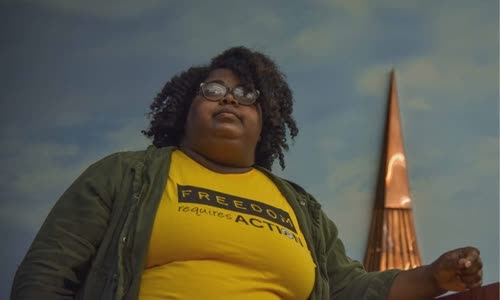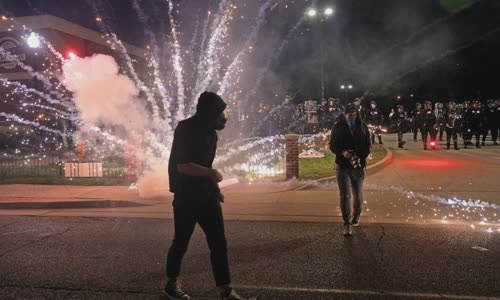Kayla Reed protested for weeks after 18-year-old black teenager Michael Brown in Ferguson was shot dead by police six years ago.
Reed now feels the old pain repeat as he joins the protest because of the death of George Floyd, a 46-year-old Negro who was numbed by police for nearly nine minutes in Minneapolis.

Activist Kayla Reed Photo: Washington Post.
When the riot forces lined up in front of the city police station, Reed understood she had to leave.
After Brown's death prompted the "Colored Man's Network to be important" movement on the outskirts of St.
4 out of 6 city council members are black, compared to just one person 6 years ago.
However, many residents say racism is still deeply rooted in Ferguson, when the colored neighborhoods are still over-controlled.
They say the city is slow to implement reforms under the Justice Department's decision to change racist behavior, such as establishing a civil assessment council and collecting data on the force's use of force.
Chris Phillips, an activist who lived in the same apartment building as Brown, said many Ferguson residents were still afraid of the local police and expressed their discontent during the protests over Floyd.
"You still see the police present here as before. Nothing has changed. It is completely different from the neighborhood of the white middle class," Phillips said, adding that this makes people feel scared.
On June 6, a video shared in a nearby town showed a white police officer driving an unarmed black suspect and continuing to beat after he had fallen into the street.

Protesters throw flares outside Ferguson City Police Department on May 31 Photo: Washington Post.
People who have participated in protests in Ferguson see the latest police violence as evidence of systematic racial discrimination.
"I think somehow, it really got a lot of people on the road and made the black community understand that this wave of protests would have the same results as Ferguson. But there are things that are very hard to come true and many are.
Mayor Ella Jones, 65, was a pastor and cosmetics business.
However, she has never participated in any of the city's protest movements and therefore, some people are skeptical.
Jones said after Brown's death, she believed that the best thing she could do was walk into town hall.
Jones's main goal was to complete the terms of the 2016 "consensus agreement", including improving training, increasing civilian surveillance and increasing racial diversity.
However, many activists still believe that Ms. Jones's efforts are not enough to solve the city's existing problems.
Meanwhile, many veteran activists and protesters in Ferguson argue that the reforms do not seem to bring change, as police violence still exists.



 Roko Rokovino
Roko Rokovino







